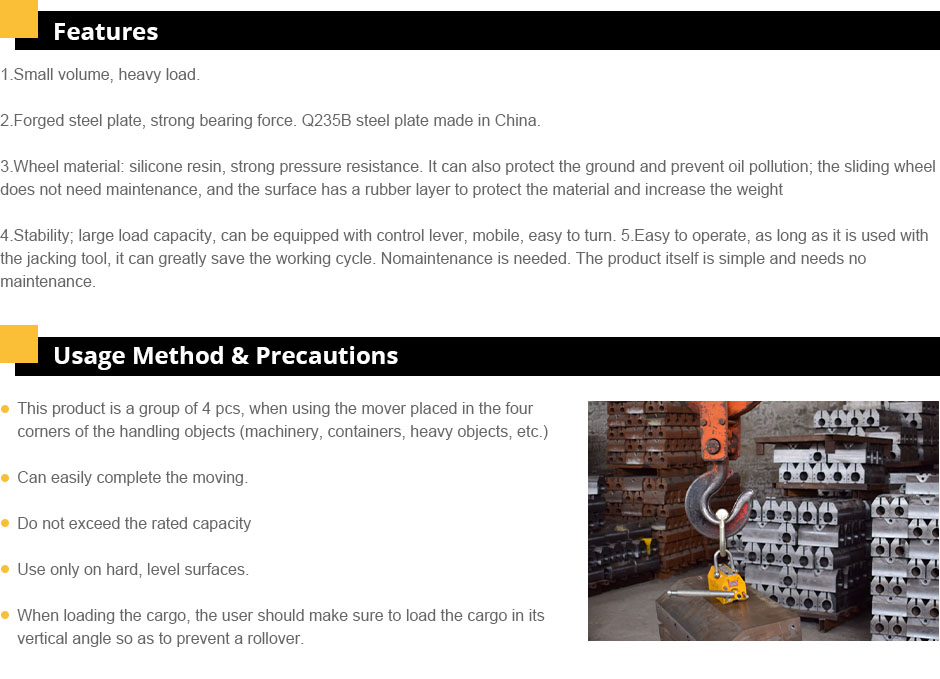Exploring the Features and Benefits of Modern Trolley Cranes in Industrial Applications
The Trolley Crane An Essential Tool in Modern Industries
In the realm of industrial lifting and material handling, the trolley crane stands out as an indispensable piece of equipment. Designed to facilitate the smooth movement of heavy loads within warehouses, factories, and construction sites, trolley cranes have become integral to modern operations.
What is a Trolley Crane?
A trolley crane typically consists of a crane that is mounted on a rail system, with a movable trolley capable of traversing along the beam. This trolley is equipped with hoisting mechanisms that allow it to lift and lower heavy items with ease. The combination of the crane's height and the trolley's lateral movement means it can cover vast areas, making it a versatile option for various applications.
Types of Trolley Cranes
There are several types of trolley cranes, each designed for specific tasks
. The most common types include1. Overhead Cranes These cranes are mounted on beams or tracks and are used for moving materials over large areas. They are ideal for factories where heavy machinery or products need to be repositioned frequently.
2. Bridge Cranes Similar to overhead cranes, bridge cranes consist of a bridge that spans the area to be serviced. They can handle the most demanding lifting tasks, making them popular in heavy manufacturing.
3. Gantry Cranes Gantry cranes are characterized by their A-shaped legs and are often found on construction sites. They are designed to move loads both horizontally and vertically, making them essential for outdoor applications.
Advantages of Using Trolley Cranes
trolly crane

The incorporation of trolley cranes in industrial settings offers numerous advantages
1. Efficiency The ability to lift and transport heavy loads quickly means that operations can run smoothly without unnecessary delays. Trolley cranes help streamline workflows, contributing to increased productivity.
2. Safety Manual lifting of heavy equipment poses risks of injury. Trolley cranes reduce the physical strain on workers and minimize the likelihood of accidents caused by improper handling.
3. Space Optimization Trolley cranes operate on tracks mounted above floor level, freeing up valuable ground space. This vertical lifting capability allows for better use of available area, particularly in confined spaces.
4. Flexibility With the option to move loads in multiple directions, trolley cranes provide flexibility that other lifting devices may lack. This multi-directional capability is invaluable in complex industrial environments.
Maintenance Considerations
While trolley cranes are robust and designed for heavy use, they do require regular maintenance to ensure their longevity and safe operation. Regular inspections should be conducted to check for wear and tear on components, such as cables, hooks, and trolleys. Lubrication of moving parts, as well as testing of safety mechanisms, is essential to prevent malfunctions.
Conclusion
Trolley cranes represent a remarkable fusion of engineering and functionality, playing a vital role in boosting efficiency and safety in industrial environments. As industries continue to evolve and demand for heavy lifting solutions grows, trolley cranes are likely to remain at the forefront of material handling technology. Understanding their types, advantages, and maintenance needs is crucial for businesses seeking to optimize their operations while ensuring safety and reliability.
-
the-power-of-trolley-cargo-and-machinery-moving-solutionsNewsAug.22,2025
-
exploring-magnetic-lifting-devices-for-efficient-steel-plate-handlingNewsAug.22,2025
-
the-essential-guide-toportal-craneNewsAug.22,2025
-
enhancing-efficiency-in-permanent-magnetic-liftersNewsAug.22,2025
-
heavy-duty-machinery-movers-and-material-handling-solutionsNewsAug.22,2025
-
the-comprehensive-guide-to-adjustable-gantry-cranesNewsAug.22,2025
-
The Ultimate Guide to Heavy Machinery Moving EquipmentNewsAug.04,2025
